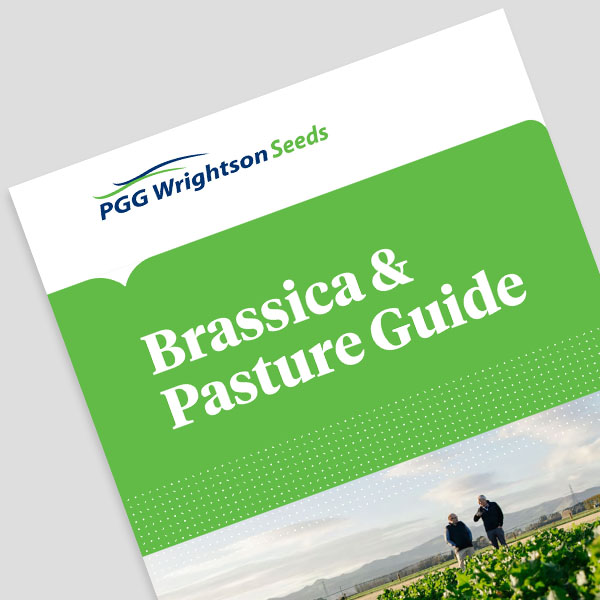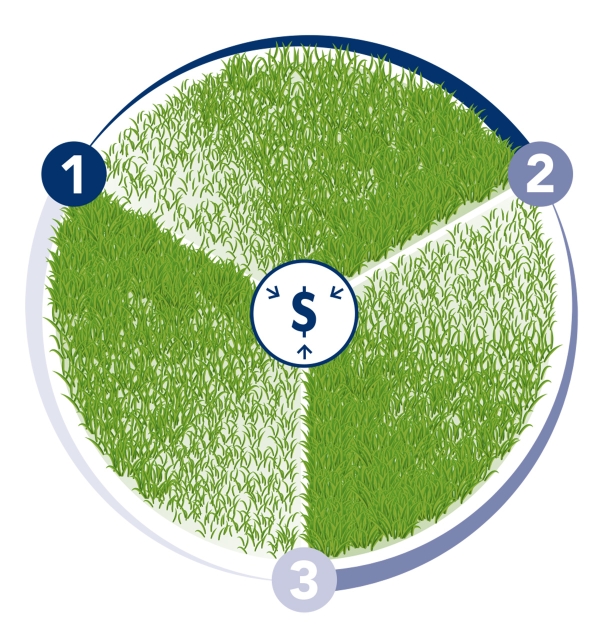Feeding and grazing
Selecting the correct pastures to go on your farm is like putting a puzzle together: each piece has its place. However, if a piece is incorrectly inserted the picture might not look as you had hoped.
Setting up a farm feed system
Selecting the correct pastures to go on your farm is like putting a puzzle together: each piece has its place. However, if a piece is incorrectly inserted the picture might not look as you had hoped.
Ryegrasses in New Zealand are split into five categories: annual, Italian, short rotation, long rotation and perennial. Annuals are short-lived, rapid-toestablish ryegrasses, while perennials are at the other end of the spectrum and live longer but are slower to establish. However, it is important to note that no grass lasts forever.
When selecting pastures for your farm, it is important to get the large pieces (typically perennial or long rotation ryegrasses) of the puzzle in the correct places. Perennial or long rotation grasses are categorised by their heading date. The heading date is the time in spring when seed heads first become visible in the pasture. Why is this important? Ryegrass has approximately a six week burst of growth prior to the seed head emerging. Once seed heads emerge, we see a decline in pasture quality due to more stem, an increase in dead material and less leaf. Having a minimum of two different heading date areas on your farm enables you to more strategically manage pasture growth and quality, for instance no more than 50% of your farm should be in one heading date.
Annual, Italian and short rotation ryegrasses can be used to undersow into existing pastures to thicken them up or extend their longevity until they are regrassed or as a pure sward pasture “crop”. In areas with high insect pressure such as Black Beetle, the use of nil endophyte grasses (i.e. annuals/ Italians) undersown into existing swards should be restricted to paddocks that are nearing pasture renewal. Alternatively, they can be used as a pure sward in paddocks that are to be taken out the following spring for crop.
Questions to ask when establishing what your farm's perennial or long rotation ryegrass needs are:
- What are the existing pasture cultivars on my farm?
- What are their heading dates?
- What area of farm is planted in them?
- Paddock use (e.g. lambing, sick cow paddock)?
A successful farm feed system
Incorporating a range of mid-season, late and very late heading dates into a farm system ensures that no more than a third of the farm should be heading at the same time, thereby assisting with the management of pasture quality.
1. Mid-season heading ryegrass
- Paddocks close to dairy shed (e.g. a sick cow paddock), paddocks needed in the first 2-3 weeks after calving and night paddocks
- Lambing/calving area
2. Late-heading ryegrass
- Feed for early in the season to lift cows towards peak production
- Feed to lift milk yield of lactating ewes and beef cows for improved lamb and calf liveweight gain
3. Very late heading ryegrass
- Feed for dairy cow mating to hold cows at peak production and to help slow the rate of drop-off of peak production
- Feed to hold ewe milk production post-peak production period and boost lamb liveweight gains allowing more lambs to be drafted to the works off the ewe


